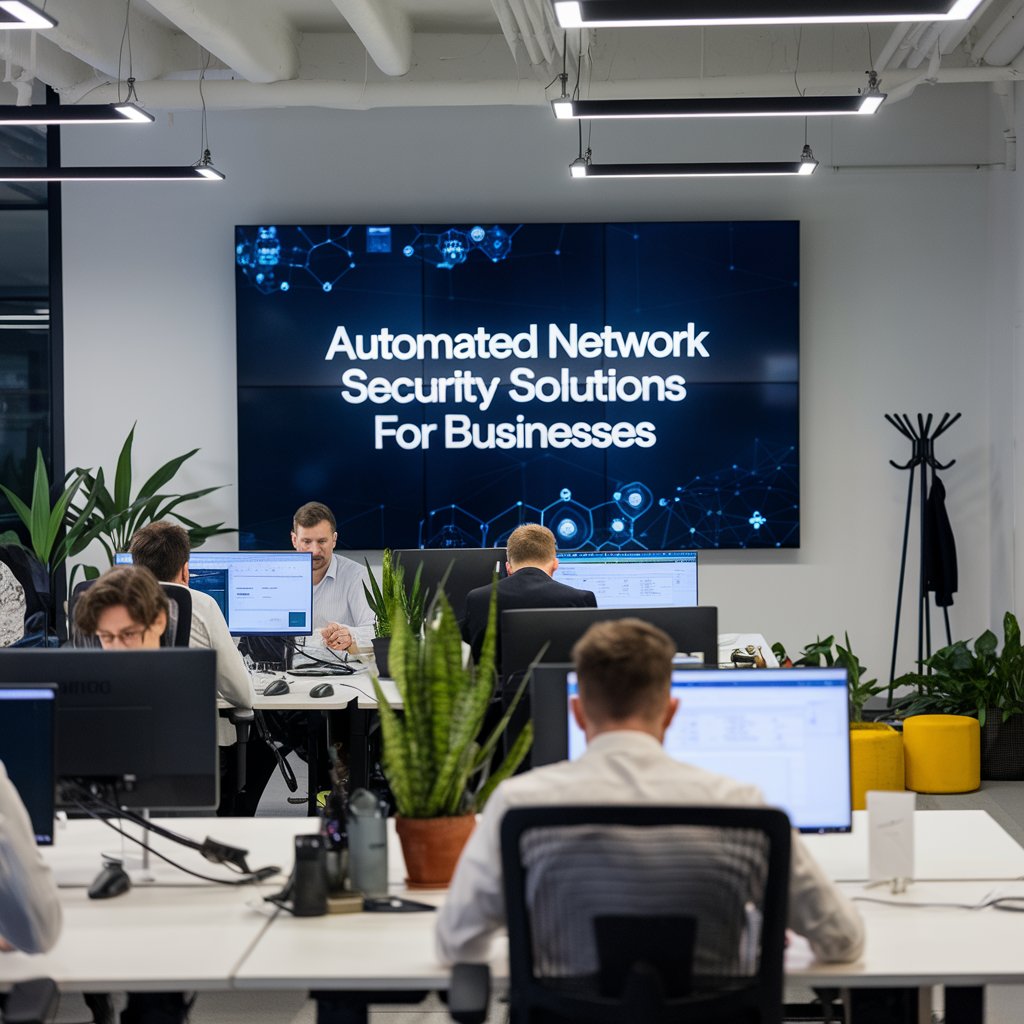UA
6 Min Read
Why Automated Network Security is Crucial
Automated network security solutions provide several advantages:
Enhanced Efficiency: Automating tasks like threat detection, incident response, and vulnerability scanning frees up security teams to focus on more strategic initiatives.
Reduced Human Error: Automation minimizes human error, which is a leading cause of security vulnerabilities.
Faster Response Times: Automated systems can respond to threats much faster than human teams, minimizing the potential impact of attacks.
Continuous Monitoring: Automated solutions provide continuous monitoring of your network, ensuring that threats are detected and addressed in real-time.
Improved Scalability: Automated security can easily scale with the growth of your business and the increasing complexity of your network.
Reduced Costs: While there’s an upfront investment, automation can ultimately reduce long-term security costs through increased efficiency and reduced incident impact.
Proactive Security: Automation allows for a more proactive approach to security, identifying and mitigating threats before they cause major damage.
Key Areas Where Automation Can Enhance Network Security
Here are some key areas where automated security solutions can significantly improve your network’s defenses:
Threat Detection and Response:
What it is: Using automated tools to detect, analyze, and respond to security threats.
How it helps: Automated systems can quickly identify and contain threats, minimizing their impact.
Examples: Security Information and Event Management (SIEM) systems, Intrusion Detection and Prevention Systems (IDPS), and Endpoint Detection and Response (EDR) solutions.
Vulnerability Management:
What it is: Automating the process of scanning your network for vulnerabilities, prioritizing them based on risk, and tracking their remediation.
How it helps: Ensures that systems are regularly scanned for vulnerabilities, making sure patches are applied quickly.
Examples: Vulnerability scanners like Nessus, Qualys, and OpenVAS and cloud-based vulnerability management platforms.
Configuration Management:
What it is: Automating the process of deploying and maintaining consistent security configurations across your network.
How it helps: Prevents misconfigurations, a common source of vulnerabilities.
Examples: Configuration management tools like Ansible, Puppet, and Chef, and cloud-based configuration assessment services.
Incident Response:
What it is: Automating incident response workflows, from detection to containment and recovery.
How it helps: Enables faster and more efficient response to security incidents, reducing damage and downtime.
Examples: Security Orchestration, Automation, and Response (SOAR) platforms that can automate incident investigation, containment, and recovery steps.
Access Control and Identity Management:
What it is: Automating the process of granting, monitoring, and revoking access to network resources.
How it helps: Ensures that access is granted only to authorized users and resources and that users are appropriately de-provisioned when their roles change.
Examples: Identity and Access Management (IAM) solutions, Multi-Factor Authentication (MFA) systems, and User and Entity Behavior Analytics (UEBA) platforms.
Network Segmentation:
What it is: Automating the creation and management of network segments to isolate sensitive resources and limit lateral movement.
How it helps: Prevents attackers from moving laterally through the network, containing breaches to isolated segments.
Examples: Microsegmentation tools that allow granular network control.
Types of Automated Security Solutions
Here are some key categories of automated network security solutions:
Security Information and Event Management (SIEM): These systems collect and analyze security logs from various sources, automating threat detection and alerting.
Intrusion Detection and Prevention Systems (IDPS): These systems automatically monitor network traffic for malicious activity and block or contain threats.
Endpoint Detection and Response (EDR): EDR tools monitor endpoints (laptops, desktops, servers) for threats and automate responses, such as isolating infected devices.
Security Orchestration, Automation, and Response (SOAR): SOAR platforms automate many security tasks, including incident response, threat intelligence analysis, and vulnerability management.
Vulnerability Scanners: Automated vulnerability scanners regularly scan your network for known vulnerabilities.
Cloud Security Posture Management (CSPM): These tools automatically monitor and manage the security of your cloud resources.
Automated Patching Systems: These systems automatically deploy software and security updates to keep systems secure.
Implementing Automated Network Security Solutions
Identify Your Needs:
Assess your current security posture and identify areas where automation can provide the most benefit.
Choose the Right Tools:
Select tools that align with your business needs, budget, and existing security infrastructure.
Start Small:
Begin by automating a few critical security tasks and gradually expand your automation efforts.
Proper Configuration:
Ensure that all automated security tools are properly configured and integrated into your environment.
Regularly Monitor:
Continuously monitor the performance of your automated security systems to make sure they are functioning effectively.
Training and Awareness:
Train your team on how to use automated security systems and respond to automated alerts.
Conclusion
Automated network security solutions are essential for businesses looking to protect themselves from the growing number and sophistication of cyber threats. By leveraging the power of automation, you can improve efficiency, reduce human error, respond faster to incidents, and maintain a strong security posture. Embracing automation is a smart move for any business serious about its security.
Call to Action:
What automated security solutions do you currently use?
What are the challenges of implementing automation in your security infrastructure?
Share your experiences and ask questions in the comments below!
Key takeaways from this blog post:
Clear Benefits: Emphasizes the advantages of automated network security.
Key Areas of Automation: Provides practical examples of areas where automation can help.
Types of Tools: Offers a useful overview of different automated security solutions.
Implementation Steps: Provides steps for implementing automated security solutions.
Non-Technical Language: Avoids excessive technical details, making the content accessible to a broader audience.
Engaging Call to Action: Encourages reader participation and interaction. audit3aa
Join our newsletter list
Sign up to get the most recent blog articles in your email every week.
You can copy our materials only after making sure that your services are safe.
This site is protected by reCAPTCHA and the Google Privacy Policy and Terms of Service apply.










